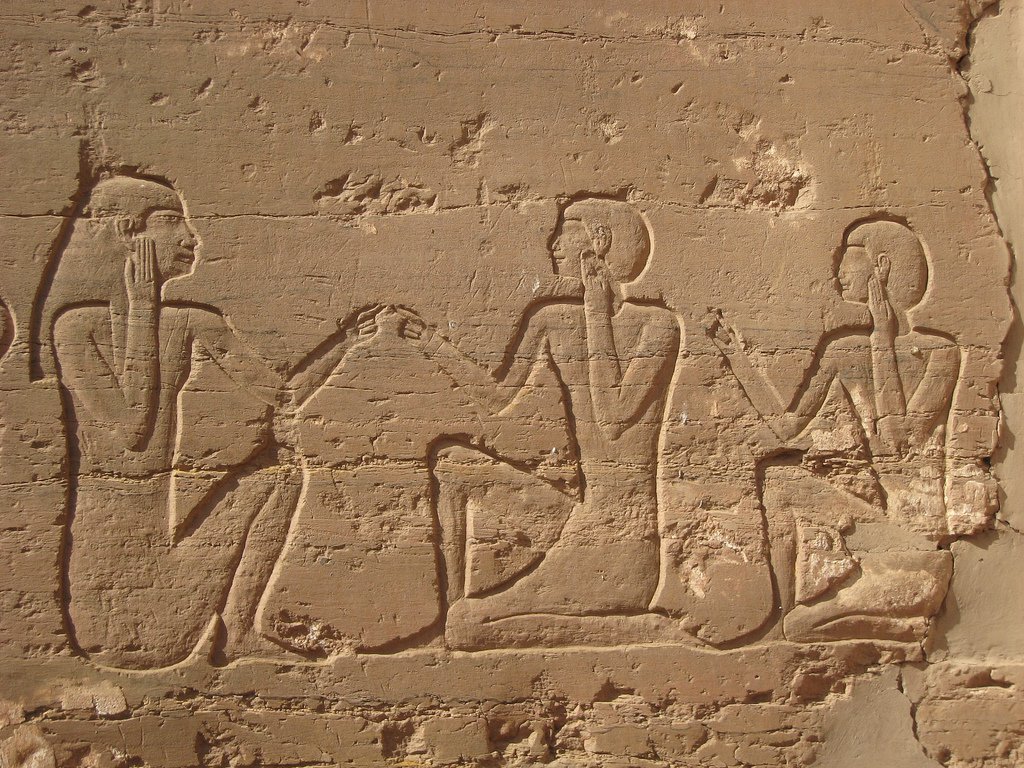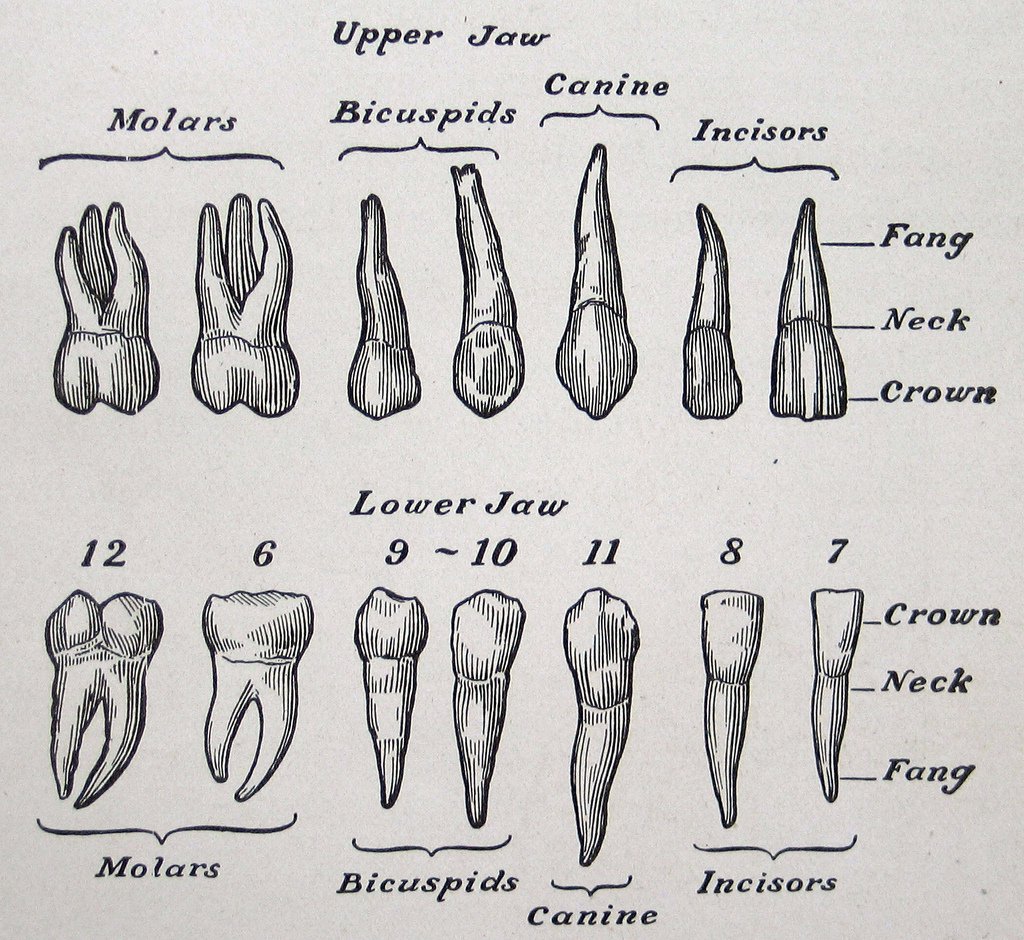A Brief History of Dentistry
From ancient Egyptian "toothers" to today's highly trained dentistry specialists, dental care has interested humans for thousands of years. Early dentists practiced their trade long before they had access to the technologies we enjoy today, such as X-rays, anesthesia, running water, and electricity. Find out how dentistry evolved from its primitive beginning to modern times.
Ancient Dental Practice

Image via Flickr by KLGreenNYC
Researchers found the earliest evidence of dentistry at the Mehgarh Neolithic site in Baluchistan, Pakistan, in human remains dating from around 7,000 B.C. Scientists determined that holes in eleven teeth found on the site were intentionally made using ancient flint drill bits. The slight decay on the teeth suggested the patients had their teeth drilled to rid themselves of tooth decay, though they found no evidence of fillings.
Later, around 3,000 B.C., an Egyptian scribe named Hesy-Re became the "Chief of the Toothers" — and one of the earliest dental practitioners remembered by name. Gum disease wasn't uncommon in ancient Egypt; indeed, radiographs of mummies show evidence of periodontal disease. In translated papyrus manuscripts, Egyptian dentists describe dental injuries, tooth diseases, and toothache remedies.
Early Greek Oral Discoveries
Around 300 B.C. the Greeks exhibited curiousity about dental health and devised different techniques for addressing tooth maladies. Called the "Father of Medicine," Hippocrates wrote about the radical method he had developed for treating a patient's tooth woes. Rather than pray to the gods, Hippocrates recommended observing a patient's problem, then making a practical recommendation for treatment. His treatments included tooth extraction, tooth ointment, and oral tissue cauterization.
Aristotle, the famous philosopher, also wrote about dentistry. He penned descriptions of tooth growth, tooth decay, and gum disease. Like Hippocrates, he also developed treatment methods, such as using forceps to pull teeth and using wires to attach loose teeth.
Other Greek physicians made important dental discoveries during this age. Claudius Galen was the first to deduce that teeth are made of bone with nerves inside. Diocles of Carystus became the first to recommend regular oral hygiene by rubbing teeth and gums to improve oral health.
Barber Dentists
During the Middle Ages, monks were the most educated citizens and carried out surgical procedures, including dentistry. When the Church banned monks from performing surgery, bloodletting, and extracting teeth, these tasks fell to barbers because of their expertise with sharp shaving blades.
Due to barbers' facility with knives, they had often helped monks with surgical duties even before they became the chief providers of dentistry. They took up the banned duties of the monks, which meant they extracted teeth and engaged in bloodletting as well as embalming the dead and cutting hair.
Increasing Knowledge of Dentistry

Image via Flickr by cori kindred
In 1530, dentistry profession received attention from the medical community after the publication of the first book specifically on dentistry, "The Little Medicinal Book for All Kinds of Diseases and Infirmities of the Teeth." In 1575, a French surgeon named Ambrose Pare — known as the "Father of Surgery" — published his "Complete Works," which included surgical dentistry techniques.
In 1685, Charles Allen became the first to publish a dental textbook in English. "The Operator for the Teeth" guided a dental practitioner beyond simply extracting teeth, and it included instructions for helping patients relax before treatment as well as making homemade dentifrice to whiten teeth.
The Father of Modern Dentistry
Called the "Father of Modern Dentistry," French surgeon Pierre Fauchard published "The Surgeon Dentist, A Treatise on Teeth" in 1723. His text included the revelation that sugar caused tooth decay, dispelling the outdated belief that tooth worms and evil spirits were responsible for dental woes.
Fauchard established dentistry as a distinct profession, and in his writing, he described a thorough system for caring for and treating teeth. His book described several techniques that are still used in modern dentistry, including cleaning teeth, filling cavities, implanting dental prostheses, and using braces.
Dentistry in America
In 1766, John Baker, a dentist who was trained in England, immigrated to the United States and began practicing dentistry. His most famous patient was George Washington, for whom he created a set of ivory dentures.
Before Paul Revere became famous as a messenger, he studied dentistry with Baker. Revere learned how to create ivory dentures and eventually opened his own dentistry practice. Paul Revere became one of the first people to use dental evidence in forensics when he identified on a battlefield corpse a dental bridge that he had made.
In 1840, the Baltimore College of Dental Surgery opened, becoming the first dental school in the United States. This institution is now the School of Dentistry at the University of Maryland.
Dr. Greene Vardiman Black, one of the founders of modern dentistry, was an American dentist born in Illinois whose research and writings became a foundation for dentistry today. Dr. Black's contributions to the profession include developing standard rules for filling cavities, inventing the first foot-pedal dental drill, and establishing a principle of "extension for prevention," which is still respected by today's dental professionals.
Modern Dentistry
Modern dentistry has come a long way from its humble beginnings — from primitive flint drills to painless modern techniques. Today, procedures like root canals, tooth restoration, extraction, implants, and tooth straightening are safe and sometimes even painless.
The American Dental Association, the world's oldest and largest dental association, promotes dental and oral hygiene through dentistry. The association strongly supports prevention when it comes to dental health and recommends visiting a dentist once every six months. If you don't have a dental insurance provider, consider a dental discount plan like Carefree Dental to offset the cost of dentistry. Don't compromise your dental health — take care of your teeth, and they'll take care of you.
Thanks to local anesthesia, X-rays, and modern dentistry equipment, dentists today have an arsenal of technology at their disposal when it comes to dental health. The field of dentistry continues to advance with the help of skilled men and women who take care of their patients' teeth.





